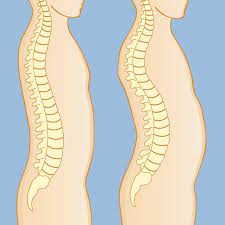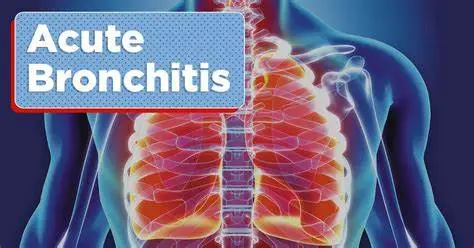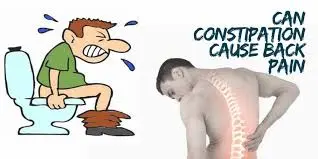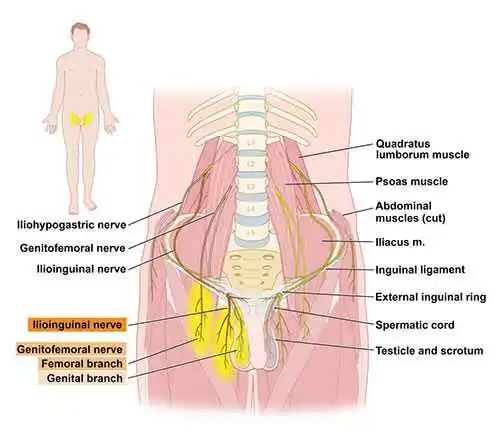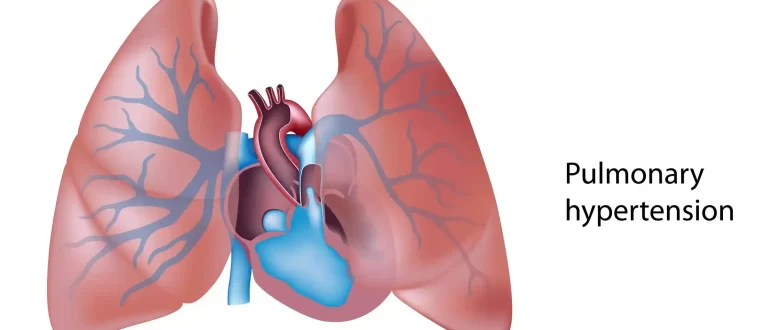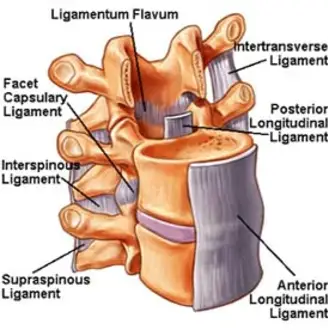Lumbarization
What is a Lumbarization?
Lumbarization is a spinal anomaly in which the first sacral vertebra (S1) exhibits characteristics typically found in the lumbar vertebrae.
In actuality, lumbarization is a congenital anomaly, meaning that a person has it from birth. The first sacral vertebra in this instance is not joined to the remainder of the sacrum. This gives the impression that there are only four sacral vertebrae and six lumbar vertebrae. A patient may have pain and mobility limitations as a result of certain clinical symptoms caused by lumbarization of the spine.
Related Anatomy
The vertebrae that make up the human spine are the cervical, thoracic, lumbar, sacral, and coccyx at the base. The middle and lower back region is home to five lumbar vertebrae and five fused sacral vertebrae, which allow mobility in that area of the back. During a normal embryo’s growth, the spinal column and vertebrae are created.
However, for a variety of reasons, there may occasionally be abnormalities during the development of the spinal column in the womb. Congenital spinal abnormalities might arise from this, and their severity could vary among affected individuals. A congenital condition known as lumbarization occurs when the sacral vertebrae resemble lumbar vertebrae, such as extra lumbar vertebrae and less fused sacral vertebrae.
The sacrum as a whole is not connected to the first sacral vertebra. This gives the impression that there are only four sacral vertebrae and six lumbar vertebrae. A patient may have pain and mobility limitations as a result of certain clinical symptoms caused by lumbarization of the spine.
What are the Causes of Lumbarization?
Congenital conditions include lumbarization. Nonetheless, there are several activities that will exacerbate the back pain that is related to this illness. Individuals who have lumbarization are more susceptible to back pain because:
- Unhealthy sitting position that strains the impacted joints
- motions that twist and may aggravate nerve roots
- improperly lifting large objects
- Long-term sitting
- Low amounts of exercise
Symptoms of Lumbarization :
Back pain may or may not result from lumbarization, and some people have no symptoms at all. Additional signs of lumbarization consist of:
- Buttock ache along with lower back pain
- inflammatory reaction
- swelling
- back stiffness
- Limited flexion on the ipsilateral (the same side of the body)
- decreased mobility
- tight muscles.
- Reduced flexibility and coordination
- elevated risk of injury
- Patterns of radicular pain or sciatica
- Young people with chronic back pain
Diagnosis of Lumbarization:
The doctor will examine you and inquire about your medical history and any current pain before making a diagnosis.
X-rays of the lumbar spine are also necessary for a lumbarization diagnosis. The patient could have flexion-extension X-rays, which allow the physician to see the lumbar area from various angles.
An MRI can also be ordered by a doctor. Your doctor may administer diagnostic injections of steroids or anesthetics to the affected region in order to confirm a diagnosis.
Examination:
Get into an upright posture. Maintain a space between your toes and heels. If you are unable to do so, ask someone nearby to measure the distance using a tape measure (starting at the third finger’s end).
Backward bending may cause pain.
Treatment of Lumbarization:
Medical Management:
The type of abnormality and the lumbarized sacral bone determine the lumbarization therapy. Anti-inflammatory medications and muscle relaxants for back pain, edema, and inflammation are among the treatments for lumbarization. One option is to explore steroid therapy and injections.
First, non-steroidal anti-inflammatory medicines and over-the-counter pain relievers could be useful. On the other hand, nerve block injections with a local anesthetic could offer some brief respite if they are ineffective. Sometimes a steroid is added to the anesthetic since it has anti-inflammatory qualities and can provide more analgesic effects.
Prolotherapy is another type of treatment that is available. In this instance, the lumbarization site is injected with an irritating material, which promotes the growth of scar tissue. Scar tissue has the ability to kill the pain-producing nerves and lessen pain when moving.
Use manual, muscular, or radicular therapy modalities as needed.
If there is something that has to be fixed, surgery may be necessary.
Even if it’s still unknown how specifically lumbarization causes back issues, it’s still important to safeguard the back and take the right precautions to keep your muscles strong.
Fusion of the divided vertebra is one of the surgical methods available. Success rates can vary, thus this course of action is only taken if it is thought that the patient would benefit in the long run.
Physical Therapy Treatment in Lumbarization
Benefits of Exercise in Lumbarization
Exercises for treating back pain can be very beneficial when performed in a regulated and gradual way. These advantages include:
- bolstering the back’s supporting muscles and relieving strain on the facet joints and spinal discs
- reducing stiffness and increasing range of motion
- enhancing circulation to more evenly transfer nutrients throughout the body, especially to the discs in the spine
- releasing endorphins, which have a built-in painkilling effect. Reliance on painkillers may be lessened by regular endorphin releases. Additionally, endorphins can improve mood and lessen depressive symptoms, which are frequently caused by chronic pain.
- lowering the frequency of bouts of neck or back pain and the intensity of the pain when it does occur.
Stretching exercise for Low Back Pain :
- Back Flexion Stretch:
laying on the back.
Once a comfortable stretch is felt over the mid and low back, lift both legs to the chest while stretching the head forward.
- Knee to Chest Stretch:
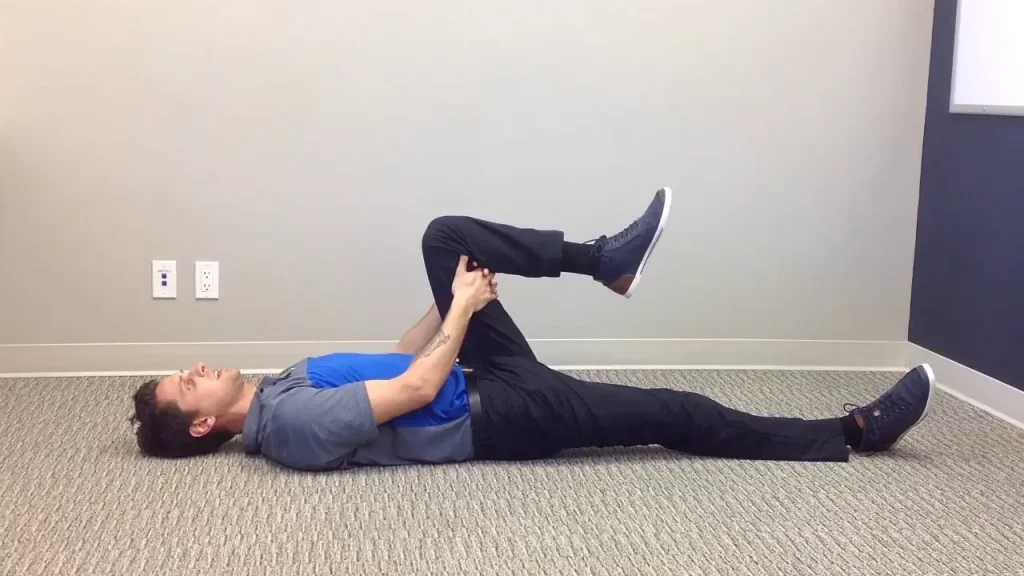
Stretch your buttocks by lying on your back with your legs bent and your heels on the floor. With both hands behind one knee, pull it toward your chest to activate your gluteus and piriformis muscles.
Continue with the other leg.
- Kneeling Lunge Stretch:
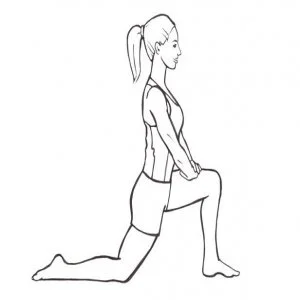
Maintaining an equal distribution of weight through both hips, begin on both knees and extend one leg forward until the foot is level on the ground. Feel the stretch in the front of the opposite leg by placing both hands on the top of the thigh and bending the torso slightly forward.
The hip flexor muscles, which link to the pelvis and, if overly tight, can compromise posture, are the target of this stretch.
- Piriformis Muscle Stretch:
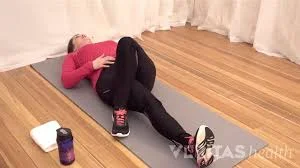
With both heels on the ground and your legs bent, lie on your back.
Till your buttocks feel stretched, slowly pull your lower leg up to your chest. With the ankle resting on the bent knee, cross one leg over the other.
Fold one leg over the other and bring it forward over the body at the knee, staying level on the floor.
- hamstring stretch:
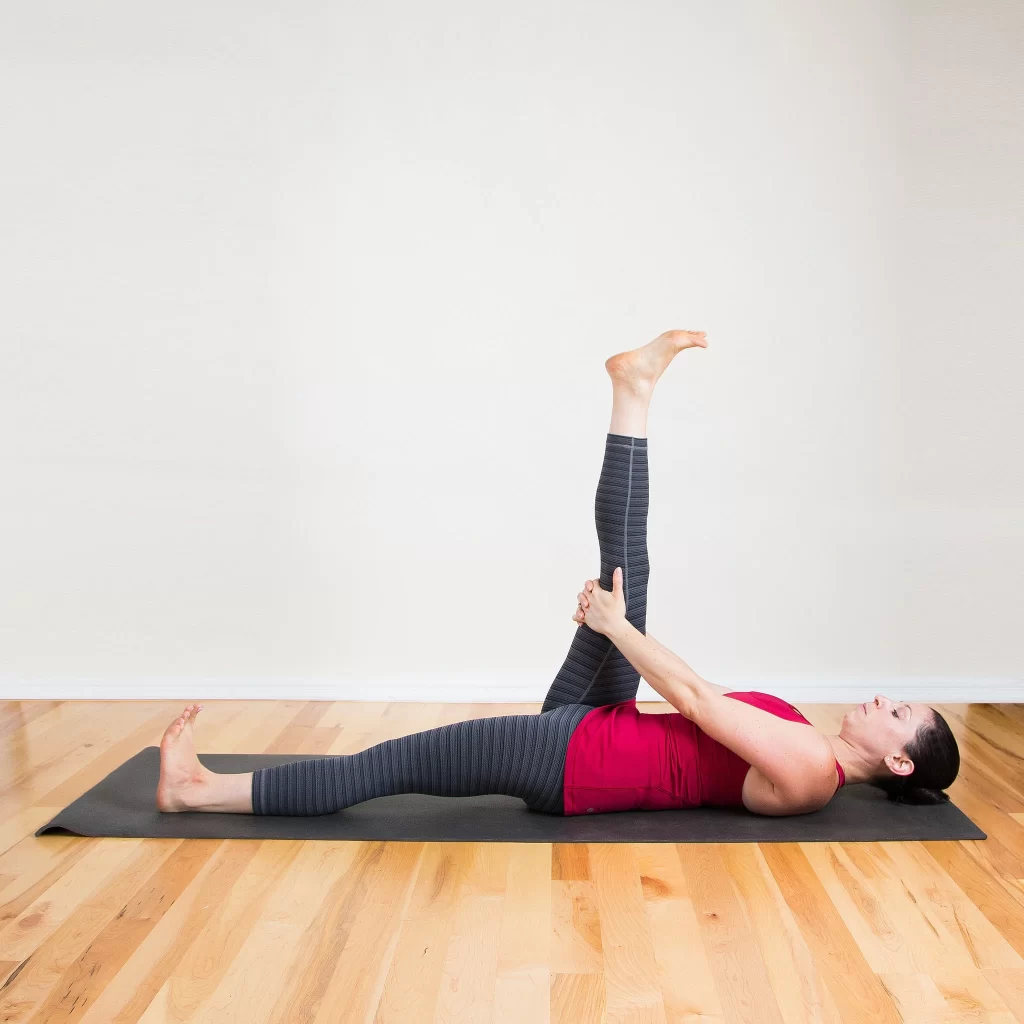
Lying on your back with your legs bent, maintain a neutral spine position.
Stretch your left leg straight and raise it into the air by lifting your heel toward the sky.
Bring your leg gently toward your chest while holding it behind your upper thigh with both hands.
Hold the stretch for up to thirty seconds, then release it and switch sides.
Strengthening exercise for Lumbarization
Strengthening exercises target the muscles around the spine as well as the core, which includes the hip, gluteus, and abdominal muscles. The spine needs support and a reduction in tension from all of the core muscles.
Exercises that strengthen the back can:
Lessening the strain on the joints and discs in the spine
improves posture in general and spinal position.
Assist with painful motions including lifting, twisting, and bending.
Strengthening exercises are often advised twice or three times a week, along with a general regimen of stretching and aerobic activity.
- Transverse Abdominis Muscle Strengthening (Abdominal Exercise):
Shoulder breadth should separate the knees and feet.
Keeping the spine neutral, draw the belly button toward the direction of the spine. Exhale and extend your hand toward the ceiling like you’re attempting to seize a trapeze above.
Then raise your shoulders and head off the floor until your shoulder blades barely make contact with the earth. Assume this posture and hold it for a moment or two.
Take another breath and repeat as soon as you’re in the air once more. Until maintaining a neutral spine becomes impossible, keep going.
Hold for one or two seconds.
Continue until you become tired.
Once daily for four to five days a week.
- Gluteus Maximus Muscle Strengthening (Buttock Exercise):
Lying on your stomach with your legs and hips off the edge of a table or bench can help build this muscle.
While keeping the spine neutral, tighten the buttock on one side and raise the leg toward the ceiling.
One should go slowly. At first, it’s typical to be limited to a few repetitions at a time.
Hold for five seconds.
each side, four to ten repetitions
Once daily for four to five days a week.
- Gluteus Medius Muscle Strengthening (Hip Abductor Exercise):
Place your back against the wall while lying on your side.
Draw in the abdominal button while keeping your spine neutral.
Lift your upper leg so that your heel stays in touch with the wall and your toes are slightly pointing toward the ceiling.
Execute cautiously, pausing for two seconds at the peak.
Ten reps on each side, once a day.
Typical strengthening exercises include the following:
- Pilates and Yoga
- Tai chi Training and weightlifting
- Bands of resistance
- Exercise ball Baseball
Lumbar stabilization exercises:
The range of exercises in the lumbar stabilization exercise program progresses from basic to more difficult.
From motionless (sleeping) to active (standing or leaping)
Moving from defying gravity to defying another external factor
Transitioning from dependable to erratic motions
From the different parts of a movement to the movement’s whole range of motion
Mobility exercise for lumbar spine:
- Low back Rotation:
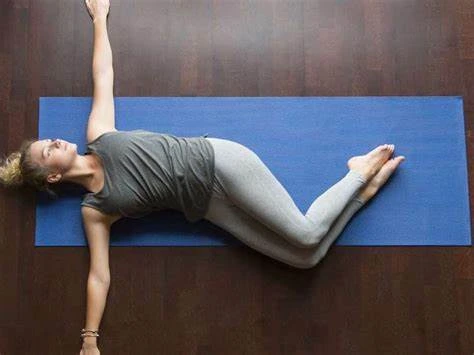
Lay back on the floor with your knees bent and your feet flat on the ground.
Roll both of your bowed knees slightly to one side while maintaining your shoulders firmly planted on the floor.
For five to ten seconds, hold the posture.
Go back to where you were before.
Roll the bowed knees gently to the other side, hold, and then take a step back to the beginning.
- Pelvic tilt exercise:
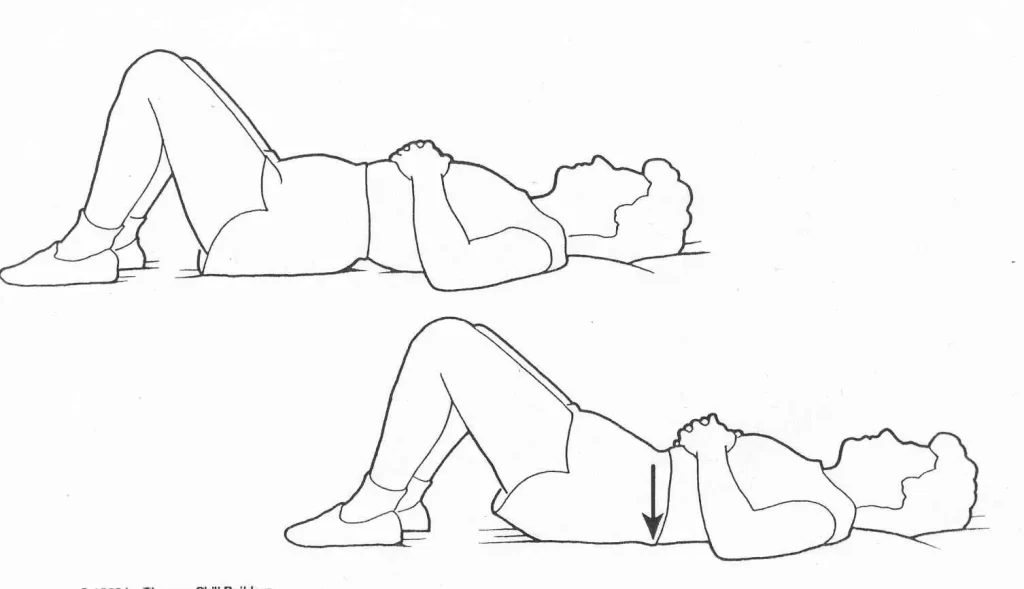
Pelvic tilt exercises are beneficial for your L5 vertebra. By fortifying your abdominal muscles and preventing your lower lumbar para-spinal muscles from contracting, it lessens lower back pain.
With your feet flat on the ground and your knees bent, lie on your back. Tilt your pelvis towards the sky by forcing your lower back into the ground while tensing your abdominal muscles. Let go and carry on.
Conclusion
Spinal lumbarization is a painful disease for which there are several therapeutic possibilities. Since it is a congenital disorder, therapeutic options can be explored before the situation worsens.
This website solely contains material that is meant to be used for informational reasons. For medical advice, please see a healthcare practitioner. In an emergency, please dial 911 and seek immediate assistance if you are looking for this information.
FAQs
How is S1 lumbarization corrected?
How Do We Treat Lumbarization? First, non-steroidal anti-inflammatory medicines and over-the-counter pain relievers could be useful. On the other hand, nerve block injections with a local anesthetic could offer some brief respite if they are ineffective.
What does S1 MRI lumbarization entail?
S1 assimilation to the lumbar spine, either fully (bilateral) or partially (unilaterally), is known as lumbarization. less often than sacralization, with just ~2% of people experiencing it 2. Six lumbar-type vertebrae free of ribs are present.
Partial lumbarization: what is it?
Partial (incomplete separation of S1-S2 bodies and their neural arches) or complete (separation of S1 from S2 segment in a sacrum) lumbarization are two possible presentations. Load bearing at the lumbosacral junction is impacted by changes in anatomy caused by S1 separation.
Does S1 lumbarization occur naturally?
5.8 and 4.1% of individuals had sacralized L5 and lumbarized S1, respectively. In conclusion, LSTV is a frequent normal variety that may, at the wrong levels, play a role in spinal surgery. It is imperative that this prevalent congenital abnormality be known to all practitioners.
Is lumbarization curable?
Slightly more than 1% of back pain sufferers are thought to require surgery at some point. Research demonstrates that non-invasive methods of Sacralization and lumbarization are effective modalities for addressing this illness’s symptoms.
To what extent does lumbarization occur?
The general population has a frequency of 3.4-7.2% for lumbarization and 1.7-14% for sacralization.
Does lumbarization occur rarely?
First sacral vertebral lumbarization is less prevalent than fifth sacralization; according to Cheng & Song (2003), the frequency is relatively low, at about ~2% of the population.
What is the lumbarization exercise?
Bend your knees and lie on your back. Push your back down to tighten your abdominal muscles. Maintain the exercise by arching your lumbar (lower) spine upward by pressing your bottom down and tensing your back muscles. Then, relax. Ten times over, repeat.
Is being lumbarized a limitation?
It is a congenital or developmental issue when the first sacral segment of the spine becomes lumbarized.
What differentiates lumbarization from sacralization?
The sacralization of the topmost sacral segment and the sacralization of the lowest lumbar vertebral body are examples of LSTVs. The morphology of these vertebral bodies varies, from widened transverse processes to total fusion.
How can one treat lumbarization?
How Do We Treat Lumbarization? First, non-steroidal anti-inflammatory medicines and over-the-counter pain relievers could be useful. On the other hand, nerve block injections with a local anesthetic could offer some brief respite if they are ineffective.
Lumbar Sacralization of L5: What is it?
Sacralization of L5 may be a result of a biomechanical and structural adaptation made to make up for the smaller sacra’s decreased joint surfaces. It could fall on one end of the transitional “spectrum,” with the lumbarization of the S1 sacral segment defining the opposite end.
What does the term “lumbarization” mean?
When the sacrum’s top (S1) can be removed from it, the lumbar spine seems to contain six vertebrae rather than five. This is known as lumbarization.
Sacralization: is it painful?
Osteoarthritis may result from this excruciating grinding of bones against one another. Additionally, it could put more strain on the pseudo joint’s discs. Sacralization may cause your spine to become less mobile, which will accelerate the deterioration of the vertebrae and the shock-absorbing intravertebral discs above this region.
How serious is lumbarization?
The phrase “lumbosacral transition vertebra” (LSTV) is frequently used to refer to both sacralization and lumbarization. This is the most prevalent lumbosacral spine birth deformity. Individuals who have this illness frequently have low back pain, which, if addressed, can worsen.
References
- Dhameliya, N. (2023b, April 7). Lumbarization ; Cause, Symptoms, Diagnosis, Treatment, Exercise. Samarpan Physiotherapy Clinic. https://samarpanphysioclinic.com/lumbarization-exercise/#google_vignette
- Voxmdspine. (2020c, October 29). Lumbarization of the Spine. Seattle, WA – Brain and Spine Surgery. https://seattleneuro.com/spinal-conditions/lumbarization-of-the-spine/


